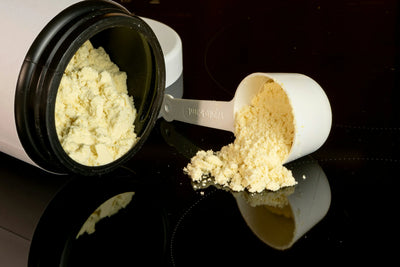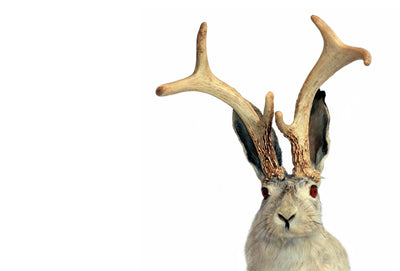Introduction
Dogs are loyal companions in the house, but when they scratch incessantly, have red skin, smell bad, or even lose their hair, a yeast infection may be at work. Yeast infections (Malassezia) are caused by an overgrowth of Malassezia pachydermatis and are one of the most common skin problems in dogs.
How to Treat Yeast Infection in Dogs: Vet-Approved Medications & Home Remedies
This fungus normally resides peacefully on your dog's skin, but when it gets out of control, it can cause itching, redness, swelling, and other discomforts. Don't worry! With veterinarian-approved medications and home care, we can help your dog get rid of yeast infections and regain healthy skin. In this article, we'll detail practical ways to treat and prevent yeast infections in dogs, so that both you and your dog can have peace of mind!

1. Veterinarian-approved Medication: Fighting Yeast Infections with Precision
The treatment of yeast infection usually requires veterinary guidance through topical or systemic medications to quickly control the infection and relieve symptoms.
(1) Topical treatments: from skin to ears, to get to the root of the problem
Antifungal shampoos: Shampoos containing antifungal ingredients such as miconazole, ketoconazole or chlorhexidine are the “star performers” in treating yeast infections. These shampoos are effective in reducing yeast on the skin and restoring skin health. To use, apply the shampoo all over the dog's body, massage gently and leave it on for 10 minutes to ensure that the medication is fully effective. Bathing is generally recommended twice a week, with specific frequency to be recommended by your veterinarian. Rinse thoroughly after bathing to avoid residual skin irritation.
Antifungal creams and ear drops: Antifungal creams and ear drops are ideal for localized infections such as facial folds, tail folds or ears. For example, the FDA-approved DuOtic ear gel with terbinafine and betamethasone acetate is designed for yeast otitis externa. It releases its medication slowly in the ear canal and the therapeutic effect lasts for up to 45 days. When using it, apply it properly according to your veterinarian's instructions to ensure that the medication covers the infected area.
(2) Systemic therapy: dealing with persistent infections
For severe or recurring yeast infections, topical treatment may not be sufficient and your veterinarian may recommend oral antifungal medications such as ketoconazole, itraconazole or fluconazole. These medications provide deep control of yeast growth through systemic action and are often more effective when combined with topical treatments. It is important to note that oral antifungal medications may be taxing on your dog's liver, so liver function needs to be monitored through blood tests before and after treatment to ensure safety. Strictly follow your veterinarian's dosage and treatment recommendations, and do not stop or adjust the dosage on your own.
(3) Adjuvant drugs: symptomatic relief and comprehensive treatment
Yeast infections are often accompanied by bacterial infections or severe itching, and your veterinarian may prescribe antibiotics to deal with the bacteria, or corticosteroids, Apoquel, or Cytopoint to relieve itching and inflammation. These medications can make your dog more comfortable while buying time for antifungal treatment. When using these types of medications, it is important to closely monitor your dog's reaction and contact your veterinarian if there are any abnormalities (e.g., decreased appetite, lethargy).

Noora Skin & Coat Health Supplement
2. Home Care Methods: Starting from the Details, Helping Recovery
While medication is the first step, home care is the “logistical support” for recovery. Through scientific care, the dog's skin can be restored to health faster.
(1) Keep it dry: the “natural enemy” of yeast
Yeast loves moist environments, so keeping your dog's Dry Skin dry is key. After every bath, swim or shower, use a clean towel or low heat hair dryer to thoroughly dry your dog's skin, especially in the folds, between the toes and inside the ears. Long-haired or ruffled-skinned dogs (e.g., pugs, bulldogs) are more prone to waterlogging and need extra drying attention. For the ears, they can be cleaned regularly with a cleaning solution recommended by your veterinarian to keep the ear canals dry and prevent yeast growth.
(2) Regular cleaning: Cut off the source of infection
Ear cleaning: The ear is the “hardest hit” area for yeast infection. Cleaning the ear 1-2 times a week with a pet-specific ear cleaning solution can maintain the pH balance of the ear canal and reduce the risk of infection. To clean, gently drop the solution into the ear canal, massage the base of the ear and then wipe away the dirt with a cotton ball, using gentle movements to avoid irritation.
Skin cleansing: Bathe regularly (usually 1-2 times per week) with an antifungal shampoo as recommended by your veterinarian. Take care to cover the whole body, especially the infected area, when bathing and blow dry thoroughly after washing. Wet wipes can be used daily to gently wipe the skin folds to keep them clean.
(3) Dietary management: building up resistance from within
Although there is no direct evidence that specific foods can cure yeast infections, scientific dietary management can enhance your dog's immunity and indirectly reduce the risk of infection. If your dog is suspected to have food allergy (commonly found in wheat, beef, etc.), you can consult your veterinarian for food allergy testing and switch to hypoallergenic dog food (e.g. grain-free formula or limited ingredient diet). In addition, a balanced diet rich in Omega-3 fatty acids (fish oil), vitamin E and zinc will moisturize the skin and strengthen the skin barrier. Ensuring your dog has plenty of water to drink each day to keep his body hydrated and balanced also contributes to skin health.
3. Prevention of Recurrence: Long-lasting Protection from Yeast
Yeast infections tend to “come back”, so prevention is key after treatment. The following methods can help keep your dog away from the risk of recurrence.
(1) Regular antifungal care
Even if the infection is cured, regular use of antifungal shampoo (weekly or bi-weekly) will keep the skin in a low bacterial state and prevent yeast from overgrowing. For susceptible areas (e.g. ears, folds), you can continue to use antifungal creams or cleansers to keep the area clean. Follow your veterinarian's recommendations for a long-term care plan.
(2) Identify the root cause
Yeast infections are often a “signal” for other problems such as food allergies, environmental sensitivities, endocrine disorders (e.g. hypothyroidism) or immune system problems. During treatment, your veterinarian may recommend skin tests or blood work to identify the underlying cause and target treatment. For example, an allergic dog may require hypoallergenic dog food or anti-allergy medication, while an endocrine problem may require appropriate medication. Addressing the root cause of the problem can effectively prevent recurrence.
(3) Regular review to prevent recurrence
After the treatment is completed, bring your dog for a review every 3-6 months to check the skin and ear condition to ensure that the infection has not recurred. Daily observation is also important: if your dog is scratching, red, swollen, smelly or losing hair again, contact your veterinarian promptly, and early intervention can prevent the problem from worsening.
Yeast infections in dogs can be tricky, but they are completely manageable with veterinarian-approved medications and careful home care! Topical antifungal shampoos and ointments for quick relief, oral medications to deal with stubborn infections, along with Dry Skin and clean care and scientific dietary management can bring your dog back to healthy skin sooner rather than later. More importantly, finding the root cause of the infection and preventing it can keep your dog away from recurrence. During the treatment process, always stay in communication with your veterinarian and follow professional advice to ensure every step is safe and effective. If your dog is suffering from a yeast infection, try these methods to help him regain his comfort and vigor! Let's use love and science to build a healthy and happy life for your dog!
Dog Skin Yeast Infection: 5 Critical Symptoms & Prevention Tips
Dogs are a joy to have around the house, but when they are scratching a lot, their skin is red, and they even smell funny, it could be a yeast skin infection that's causing trouble. Yeast infections are usually caused by an overgrowth of Malassezia, a fungus that normally lies dormant on your dog's skin, but can cause trouble when the environment or immune system is out of balance. Knowing the symptoms of yeast infections and how to prevent them can not only help pooper scoopers catch the problem in time, but also help your dog regain healthy skin and rejuvenation! This article will detail the 5 key symptoms of yeast infection in dogs and 5 practical prevention tips to help you and your dog stay away from skin troubles!
1. 5 Key Symptoms of Yeast Infection in Dogs
The symptoms of a yeast infection are often obvious, and the pooper scooper can detect the problem in time with careful observation. Here are the 5 most common “warning signs”:

(1) Itchy skin: a “distress signal” that you can't stop scratching
Itching is the “number one sign” of a yeast infection. Dogs will scratch, lick and even gnaw at the infected area in an attempt to relieve the discomfort. You may see them “favoring” a particular area, such as an ear, belly or paw. Excessive scratching can lead to skin breakdown and increase the risk of secondary infections, so don't ignore frequent scratching!
(2) Redness and swelling of the skin: a “red alert” for inflammation
The skin in the infected area tends to be red, swollen and warm, which is the body's immune system's response to fighting yeast. Redness and swelling may appear in the ears, armpits or skin folds. If left untreated, the red and swollen areas will gradually expand and even cause wider inflammation. When stroking your dog's skin, if you notice unusual redness or warmth, you need to pay attention as soon as possible.
(3) Odor: The “unique sign” of moldy smells
Yeast infections are often accompanied by a peculiar odor that smells like moldy bread or tortillas. The odor comes from the metabolites produced by the yeast as it breaks down skin oils and proteins, and is especially noticeable in the ears, folds or between the toes. If you smell a strange odor when you hold your dog, it may be the yeast!
(4) Hair Loss: A “Warning Light” for Bald Spots
When the infection is severe, your dog's hair may fall out in large patches, forming bald patches. This is the body's natural response to try to “clean up” the infected area, but it also makes the skin more fragile and susceptible to external irritation. The areas of hair loss often look dry or greasy and may feel rough to the touch.
(5) Secretions from skin folds: greasy “troublemakers”
The skin folds (such as the ears, neck, armpits or groin) tend to accumulate yellow or brown oily discharge, which is a “mixture” of yeast and skin debris. These discharges stick to the hair and make the skin look dirty, and can aggravate itching and odor. Ruffed-skinned dogs (e.g., pugs, bulldogs) are particularly susceptible to this problem.
2. 5 Tips for Preventing Yeast Skin Infections in Dogs
Yeast infections are common, but with scientific preventative measures, pooper scoopers can greatly reduce the risk of infection. Here are 5 practical suggestions to help you guard your dog's skin health!
(1) Keep Dry Skin: The Natural Enemy of Yeast
Yeast loves moist environments. Keeping your dog's skin dry is the first step in preventing infection. After every bath, swim or rain shower, dry your dog's skin thoroughly with a clean towel or low heat hair dryer, focusing on the folds, between the toes and inside the ears. Folds and long-haired dogs are more prone to waterlogging and need extra care. For the ears, they can be cleaned weekly with a pet-specific ear cleaning solution to keep the ear canals dry and eliminate yeast growth.
(2) Regular Cleaning: Creating a Healthy Skin Barrier
Regular cleaning is a great tool for preventing yeast infections. Bathing your dog weekly with an antifungal shampoo containing miconazole or ketoconazole can effectively control the amount of yeast on the skin. Gently massage infection-prone areas (such as ears and groin) during bathing, and blow-dry thoroughly afterward. Ear cleaning is also important, use the veterinarian-recommended ear cleaning solution 1-2 times a week to keep the pH balance of the ear canal and prevent yeast from “taking root”.
(3) Dietary management: boosting immunity from within
Although there is no direct evidence that specific foods can prevent yeast infections, a healthy diet can enhance your dog's immunity and indirectly reduce the risk of infection. Choose a high-quality dog food rich in Omega-3 fatty acids (fish oil), vitamin E and zinc, which can moisturize the skin and strengthen the skin barrier. If you suspect that your dog has food allergies (e.g. allergy to wheat, beef), consult your veterinarian for food allergy testing and switch to grain-free or hypoallergenic dog food. Ensure that your dog drinks enough water every day to keep his body hydrated and balanced, which also contributes to skin health.
(4) Avoid over-cleaning: moderation is the way to go
Cleaning is important, but “too much is not enough”. Too frequent bathing or the use of stimulating cleaning products may destroy the natural oil barrier of the dog's skin, but let the yeast take advantage of. Bathe once a week, use a gentle pet shampoo, and use a moisturizing spray or lotion to lock in moisture after bathing. Avoid using human shampoo or alcohol-based products to avoid skin irritation.
(5) Regular checkups: prevention is better than cure
Spend a few minutes each week checking your dog's skin and coat for abnormalities such as itching, redness, odor or hair loss. Ears, folds and paws are “high risk” areas for infections and need special attention. Take your dog for a thorough checkup every 6-12 months. Your veterinarian can check for potential problems (such as allergies or endocrine disorders) with a skin test or blood test. If abnormalities are found, seek prompt medical attention. Early intervention can help prevent yeast infections from worsening.
Yeast skin infections in dogs can be a headache, but with key symptoms and prevention methods, you can keep your dog safe from itching and discomfort! Itchy skin, redness, odor, hair loss and discharge are the 5 major “alarms” of an infection, and it is important for the pooper scooper to keep a careful eye out for problems. By keeping Dry Skin dry, regular cleaning, scientific diet, moderate care and regular checkups, we can effectively reduce the risk of infection and prevent recurrence. If your dog's skin problem persists or worsens, don't delay and consult your veterinarian as soon as possible for professional diagnosis and treatment advice. Let's use love and science to create smooth and healthy skin for your dog and share a happy and carefree day!
Yeast in Dogs Skin: Root Causes and Effective Management Plans
Skin yeast infections in dogs are a common health problem that often leaves pooper scoopers both distressed and helpless. It is heartbreaking to watch your dog scratch frequently, have reddened skin, and even emit a foul odor. This infection is usually caused by an overgrowth of Malassezia pachydermatis, which normally resides quietly on your dog's skin, but certain factors can upset the balance and lead to an outbreak of infection. Understanding the root cause of a yeast infection and adopting a scientific management program can not only help your dog recover quickly, but also prevent recurrences. In this article, we will delve into the triggers of the infection and 5 practical management strategies to help you and your dog get back to health and happiness!
1. Root Causes of Dermal Yeast Infections in Dogs
In order to effectively deal with a yeast infection, you must first understand why it is “coming to you”. Here are some of the key factors that can lead to an infection.
(1) Characteristics of Serratia marcescens: a lurking troublemaker
Malassezia is a yeast that resides on your dog's skin, ears and mucous membranes and normally coexists with your dog to maintain a healthy balance of skin flora. However, when certain conditions stimulate it to overpopulate, it can trigger an infection that can lead to itching, redness and swelling. Understanding its characteristics can help us to prevent and treat it in a more targeted manner.
(2) Main triggers: the “trigger” that breaks the equilibrium
Humid environment: Malassezia loves humid and hot environment. In summer, rainy season or after the dog bath is not thoroughly Dry Skin, ear and other parts of the folds of the skin become its “paradise”. Wet hair and warm skin provide excellent conditions for yeast to reproduce.
Abnormal skin oil: Excessive oil secretion from the dog's skin (often associated with allergic skin diseases) can provide a “nutritious meal” for the yeast, prompting it to grow wildly. Greasy skin not only aggravates infections, but can also cause odors.
Damaged skin barrier: Scratching, licking or trauma can damage the skin's natural protective layer, allowing yeast to penetrate deeper into the skin and cause infection.
Immune system problems: Dogs with a weak immune system (e.g., long-term corticosteroid use or chronic illness) are more susceptible to yeast. The immune system is unable to effectively control the balance of the flora and the risk of infection increases.
Allergic reactions: Food allergies, environmental allergies (e.g. pollen, dust mites) or flea bites can lead to inflammation of the skin, disturbing the balance of the flora and paving the way for yeast infections.
Endocrine disorders: Endocrine problems such as hypothyroidism or Cushing's disease can weaken skin health and make dogs more susceptible to yeast infections.
(3) Susceptible breeds: Born “at risk”
Certain dog breeds are more susceptible to yeast infections due to their skin structure or genetics, such as the West Highland White Terrier, Basset Hound, Corgi, Bichon Frise, Poodle and Schnauzer. These dogs tend to have more skin folds or oily skin, and pooper scoopers need to pay extra attention to their skin health.
2. Effective Management Program: Scientific Response, Comprehensive Guardianship
Controlling yeast infection in dogs requires a multi-pronged approach, combining medication, daily care and preventive measures to keep your dog away from itching and discomfort. Below are 5 practical management programs.
(1) Topical treatment: pinpointing the source of infection
Anti-fungal shampoo: Anti-fungal shampoo containing miconazole, ketoconazole or chlorhexidine is a “powerful tool” for treating yeast infection. Shower 1-2 times a week, apply the shampoo all over the body, massage gently and leave it on for 10 minutes to ensure that the medication works deeply. Continuing for a few weeks usually results in a significant improvement in symptoms. Rinse thoroughly after washing to avoid residual skin irritation.
Topical creams: For localized infected areas such as ears and skin folds, antifungal creams (e.g. those containing ketoconazole or terbinafine) can directly inhibit yeast growth. Apply as directed by your veterinarian to ensure coverage of the infected area.
CLEANING CARE: Clean ears and skin folds weekly with a pet-specific cleaning solution to remove oil, discharge and dirt. Keeping these areas dry and clean can effectively reduce yeast growth.
(2) Systemic treatment: dealing with stubborn infections
When the infection spreads or recurs, topical treatment may not be sufficient and your veterinarian may recommend oral antifungal medications such as ketoconazole, itraconazole or fluconazole. These medications provide deep control of yeast through systemic action and are often more effective when paired with topical treatments. It is important to note that oral medications may have an effect on the liver and liver function needs to be monitored by blood tests before and after treatment. Strictly follow your veterinarian's dosage and regimen recommendations, and do not stop taking the medication without authorization.

(3) Dietary management: Enhancing skin health from within
Balanced diet: Choosing high quality dog food rich in proteins, vitamins and minerals can enhance your dog's immunity and indirectly reduce the risk of infection. Avoid dog food with too many additives or grains, which may trigger allergies or aggravate skin problems.
Nutritional supplements: Adding Omega-3 and Omega-6 fatty acids (e.g. fish oil, flaxseed oil) can moisturize the skin, strengthen the skin barrier, and reduce abnormal oil production. Vitamin E and zinc also aid in skin repair. It is best to consult your veterinarian to determine the appropriate dosage and product before supplementation.
(4) Daily care: the details make the difference
Keep Dry Skin: Yeast is most afraid of dry environments! After bathing, swimming or getting wet, dry your dog's skin thoroughly with a clean towel or low heat hair dryer, especially in the folds, between the toes and inside the ears. Folds and long-haired dogs need special attention to avoid moisture buildup.
Regular brushing: Brushing the coat 2-3 times a week can remove loose dander and hair loss, improve blood circulation to the skin and enhance skin health. Choose a comb that suits the coat type and comb gently to avoid pulling on the skin.
Avoid over-cleaning: Although cleaning is important, bathing once a week is sufficient. Over-cleaning can damage the skin's natural oil layer, which in turn allows yeast to take advantage of it. Choose a mild pet-specific shampoo, and after washing with a moisturizing spray to lock the skin moisture.
(5) Preventing recurrence: Long-term protection against yeast infections
Yeast infections are prone to “comebacks” and require ongoing management after treatment to prevent recurrence:
Regular antifungal care: Even if symptoms disappear, weekly or bi-weekly use of antifungal shampoo can maintain the skin in a low bacterial state. Ears and folds can continue to be cared for with cleansing solutions.
Addressing the root cause: Yeast infections are often a “sign” of other problems, such as allergies, endocrine disorders or immune problems. Consult your veterinarian for skin tests or blood work to identify the underlying cause (e.g., food allergies, thyroid problems) and target treatment to eliminate recurrence at the source.
Regular checkups: Take your dog for a checkup every 3-6 months to check the skin and ear condition to ensure that the infection has not returned. Daily observation is also critical. Seek medical attention if you notice any abnormalities such as scratching, redness, swelling or odor.
Skin yeast infections in dogs can be tricky, but by understanding the root cause and adopting a scientific management plan, you can keep your dog free of itching, redness, swelling and odor. A variety of factors, from humid environments to immune issues, can give the green light to yeast, and topical treatments, systemic medications, dietary management, daily care, and prevention of flare-ups are the keys to dealing with it. Always communicate with your veterinarian and follow professional advice to ensure safety and effectiveness every step of the way. Let's use care and science to create smooth and healthy skin for your dog and share a happy and carefree day!





